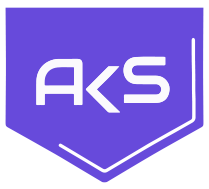Imagine crossing toll plazas without stopping- India’s highways are close to this reality

India’s highways are on the brink of a transformative leap with the National Highways Authority of India (NHAI) launching the nation’s first Multi-Lane Free-Flow Tolling (MLFF) system on the Dwarka Expressway. This advanced tolling system promises seamless and cashless tolling on Indian highways that will replace traditional toll plazas with state-of-the-art, automated technology. Let’s dive into how the free-flow tolling system is set to reshape travel, improving efficiency, sustainability, and the overall journey experience.
1. No More Toll Booth Delays
Traditional toll plazas are known for creating bottlenecks, with vehicles queuing up, especially during peak hours. The MLFF toll system eliminates the need for booths entirely, allowing free-flowing traffic without interruptions. With sensors and automated license plate recognition cameras capturing vehicle details, drivers can travel through the toll point without stopping, drastically cutting down travel time.
2. Fuel Efficiency and Reduced Emissions
With less idling and stopping, fuel consumption is reduced, leading to significant cost savings and lower carbon emissions. As the first multi-lane toll system in India, MLFF on Dwarka Expressway helps pave the way for an eco-friendly transportation approach, reducing the overall carbon footprint on India’s highways. This is not just about faster travel but also a greener, more sustainable future for India.
3. Real-Time, Cashless Toll Collection
The system integrates a bank-led tolling process that detects vehicles and deducts toll charges automatically from the driver’s linked bank account. This real-time toll collection system ensures seamless payments, eliminating cash exchanges, which are often time-consuming and sometimes error-prone. This contactless tolling technology is also more hygienic and safer, especially for frequent travelers.
4. Increased Security and Accuracy with Automated Plate Recognition
With advanced license plate recognition technology, vehicles are tracked precisely, ensuring accurate toll deductions. This technology also helps in reducing toll evasion and enhances security as vehicle details are recorded in real time. The system also has the potential to improve highway surveillance, contributing to safer roads and efficient enforcement of traffic regulations.
5. Enhanced Road Capacity and Smooth Traffic Flow
The absence of toll booths means traffic congestion at toll points will be a thing of the past. By enabling vehicles to pass through without stopping, the MLFF toll system allows higher road capacity and smoother traffic flow, especially beneficial for heavily trafficked highways like the Dwarka Expressway. This will not only benefit daily commuters but also improve the logistics and transport sector with reduced transit times.
The Future of Indian Tolling: A Step Toward Smart Infrastructure
The introduction of the MLFF system is a bold step toward smart highway infrastructure in India. This initiative aligns with the country’s goals of embracing digital advancements and sustainable practices. As traditional toll plazas give way to AI-driven toll collection, the NHAI’s commitment to modernizing Indian highways is evident. The MLFF tolling system marks the beginning of next-generation tolling in India, setting a precedent for further smart infrastructure projects.
Impact on Travelers: How Will This Change Your Journey?
For travelers, the shift to MLFF tolling means faster, smoother, and more efficient travel across India’s highways. This system promises to revolutionize how we experience long-distance travel, making journeys more enjoyable and predictable. Less time in queues means more time saved, adding ease to daily commutes and long-distance drives alike.
Conclusion: Building Roads for Tomorrow
The launch of the Multi-Lane Free-Flow Toll System on Dwarka Expressway isn’t just an improvement in toll collection; it’s a milestone in India’s smart transportation journey. As more highways across India adopt MLFF tolling, travelers can look forward to a future where highways are free from congestion, environmentally friendly, and powered by innovative, digital solutions.



